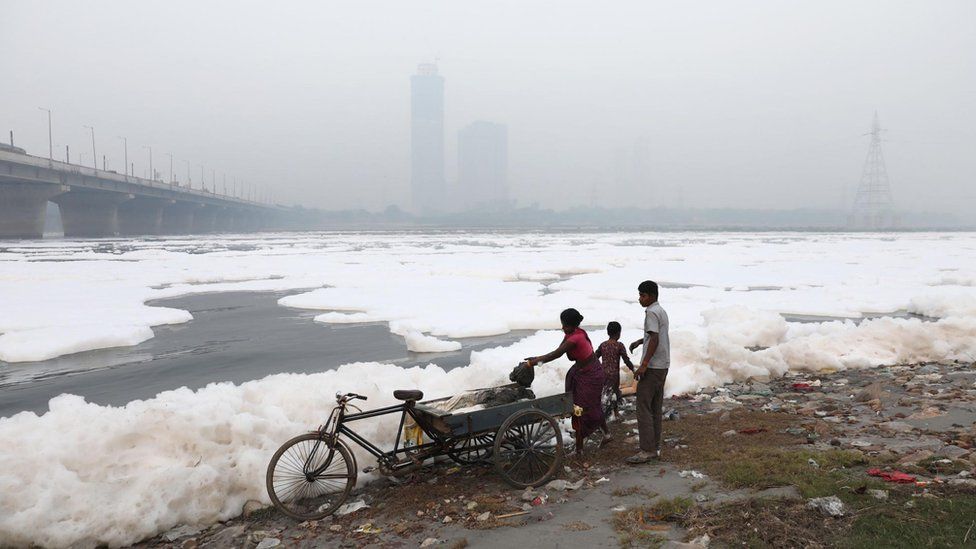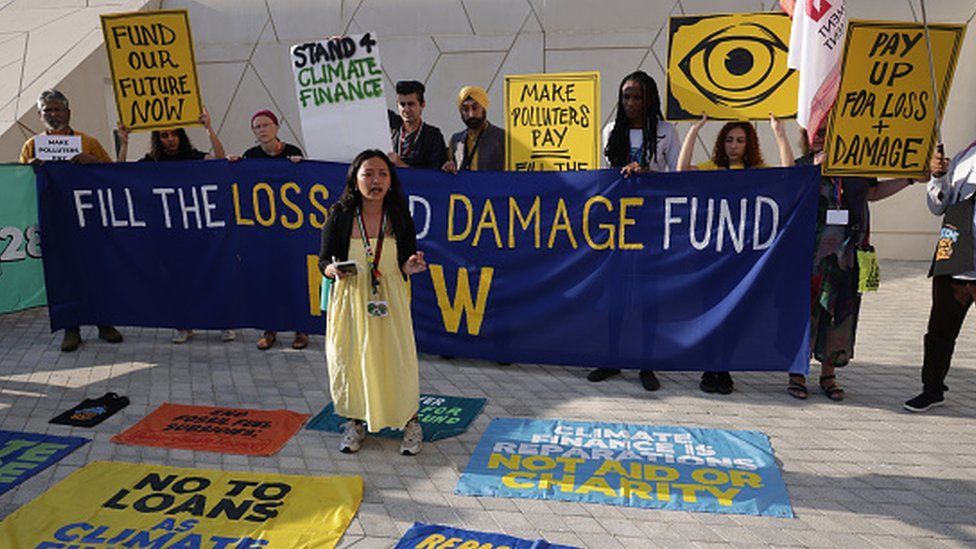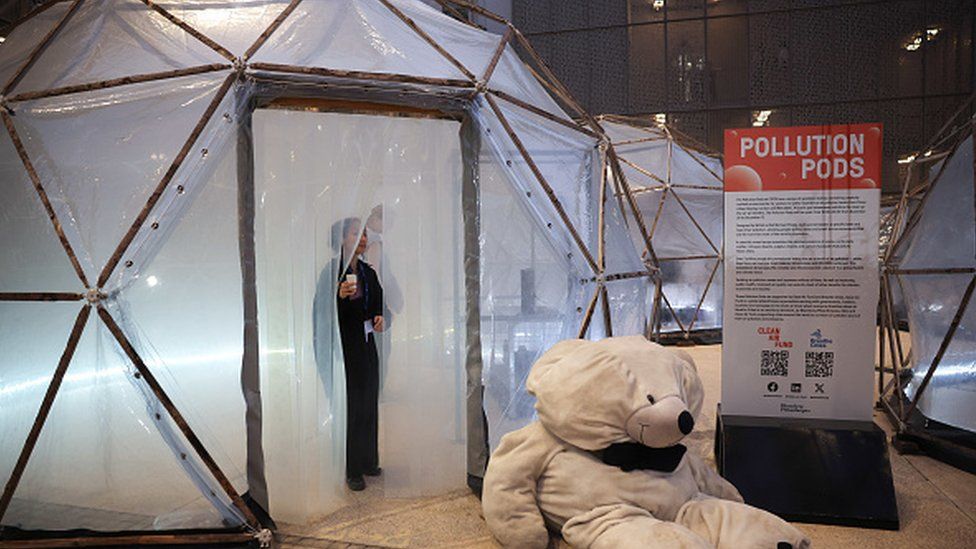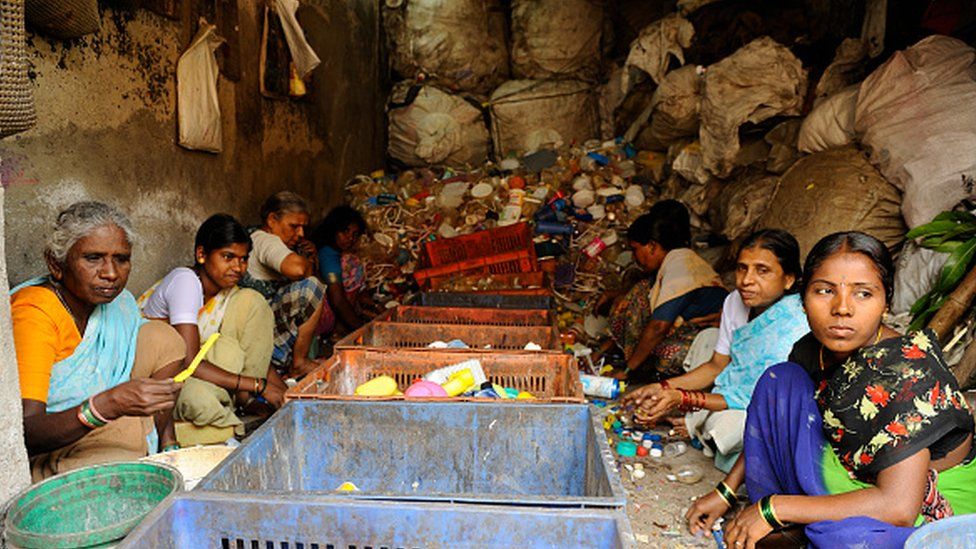Navin Singh Khadka

China is the top emitter of greenhouse gases in the world, while India comes in at number three.
The two countries also have major economies - so why is there a disagreement over whether they should contribute to a fund to tackle the damage caused by climate change?
The question remains even after COP28 - this year's United Nations (UN) climate change conference in Dubai - announced a deal between countries to begin the operation of the fund and 18 countries pledged money for it.
A report released in 2022 by the Vulnerable 20 Group (V20), which has 68 developing nations as its members, showed that 55 members (the rest joined recently) had lost $525bn (£414.2bn) because of climate change over the last two decades. This was one-fifth of their wealth.
China and India are not among these countries but argue that they too have vulnerable communities which will need financial support from such a fund.
A 2022 UN report said that by 2030, developing countries would need over $300bn annually to fight climate change. "Loss and damage finance needs are closely connected to our ability to mitigate and adapt to climate change," it added.
What is the loss and damage fund?
The fund aims to provide financial assistance to poorer nations that have been hit by climate-related disasters - for example, communities displaced by floods or rising sea levels - so that they can rebuild and be rehabilitated.
It is different from climate adaptation funds because loss and damage refer to a situation in which communities can no longer adapt to climatic impacts or prepare for it because the damage has already been done.

The COP28 is aiming for a consensus on global measures to mitigate the effects of climate change
After years of disagreement between developed and developing countries, the loss and damage fund was established in principle during last year's COP27 in Egypt.
The agreement is to begin its operation at COP28. Fifteen developed countries and a developing nation (COP28 host UAE) have made funding pledges totalling to around $660m so far, according to the Natural Resources Defence Council that has been tracking financial pledges at COP28.
Who should pay for it?
The US - a developed country and the second largest greenhouse gas emitter in the world - and other developed nations say China and India should join them in not only making significant cuts in emissions for meaningful global climate action, but also contribute to the fund.
But China and India disagree, arguing their high levels of emissions are a recent development when compared to the historic emissions of developed countries like the US and the UK.
They also claim they are still developing countries, as set out in the UN Framework Convention on Climate Change signed in 1992, and therefore actually qualify to receive the loss and damage fund they are being asked to contribute to.
In the year since COP27, counties have had heated debates about how to make the fund work, and finally in October 2023 agreed on a set of recommendations.
The recommendations, now approved by COP28, "urge" developed countries to support the loss and damage fund, and "encourage" others to support it voluntarily.
The decision also makes it clear that all developing countries are eligible to apply for funding.

Pollution pods at COP28 simulate air pollution levels from Beijing, London and Delhi
But negotiators say the decision has not ended tensions between developed countries and major developing economies like China and India over whether the latter should pay for the fund or they should receive it.
"The sources of finance remain a major contentious issue that has been parked for now," said a negotiator, from a country in the West, who asked not to be named.
Who should get it?
China overtook the US as the largest carbon dioxide (CO2) emitter in 2006.
But both China and India argue the climate crisis was caused by developed countries emitting greenhouse gases from as early as the 1850s, when the industrial period began.
The two Asian giants also point to the principle of "common but differentiated responsibilities" in the United Nations Framework Convention on Climate Change (UNFCCC), which basically means all countries have responsibility to cut greenhouse gas emissions, but their share of responsibility depends on their development needs.
Many civil societies and climate campaigners have also supported that same argument.
"The massive losses and damages we are seeing right now are the result of 30 years of largely foot-dragging by developed countries on reducing their emissions faster and providing climate finance to developing countries," says Liane Schalatek, associate director at Heinrich Boll Stiftung, a US-based international organisation that closely follows loss and damage negotiations.
"To ask developing countries to contribute to the new fund on an equal footing with developed countries is morally wrong and disingenuous," she argued.
Developed countries, however, argue the grouping of countries is outdated and needs revising.
Countries were labelled as developed and developing back in 1992. Critics say a lot has changed since then, particularly with countries like China and India which are now both major economies and among the top greenhouse gas emitters.
And now with the UAE, a developing country in the UNFCCC listing, having pledged $100m for the fund, they say an example has been set.

China and India argue that they too have climatically vulnerable communities who will need financial support from such a fund
"We hope not just China and India but also other countries like Saudi Arabia - developing countries according to the 1992 list - will see themselves more as contributors to the fund than recipients," an anonymous negotiator from a Western country added.
Some small island states also echoed that message.
'Moral responsibility'
Michai Robertson, lead loss and damage finance negotiator for the Alliance of Small Island States, argues there's a "moral responsibility to engage with the fund" that needs to be met by major economies such as China and India.
"Having the words 'encourage other parties to provide fund' in the recommendation is an acknowledgement by the entire committee (including developed and developing countries) that we need beyond developed countries as well and other parties to be involved too."
But it is not the first time a climate fund has taken a long time to be established.
A policy and advocacy officer I spoke to likens the debate over the loss and damage climate fund to a previous climate finance pledge that still hasn't materialised.
"It is unsurprising that many developing countries view this as little more than a delaying tactic, given the decade-long trust deficit which lies at the heart of UN climate negotiations," says Ross Fitzpatrick of Christian Aid, a poverty relief organisation.
"The trust deficit is best exemplified by the failure of wealthy nations to deliver on their previous pledge to provide $100bn in annual climate finance beginning in 2020."
This $100bn climate finance pledge is separate from the loss and damage climate fund, and was made by developed countries during the climate summit in Copenhagen in 2009.
As long as that pledge remains unfulfilled, major developing countries will always have an argument for not making any contribution to the loss and damage climate fund, says Aarti Khosla, the director of Climate Trends, a Delhi-based organisation that researches loss and damage negotiations and other climate issues.
"The principles of the convention (the 1992 UN climate convention) make a case for evolving responsibilities, meaning the definition of the 'common but differentiated responsibilities' also changes," she says.
"But it is not simple for China and India to pay in the fund without the developed world having lived up to its previous promise."
No comments:
Post a Comment